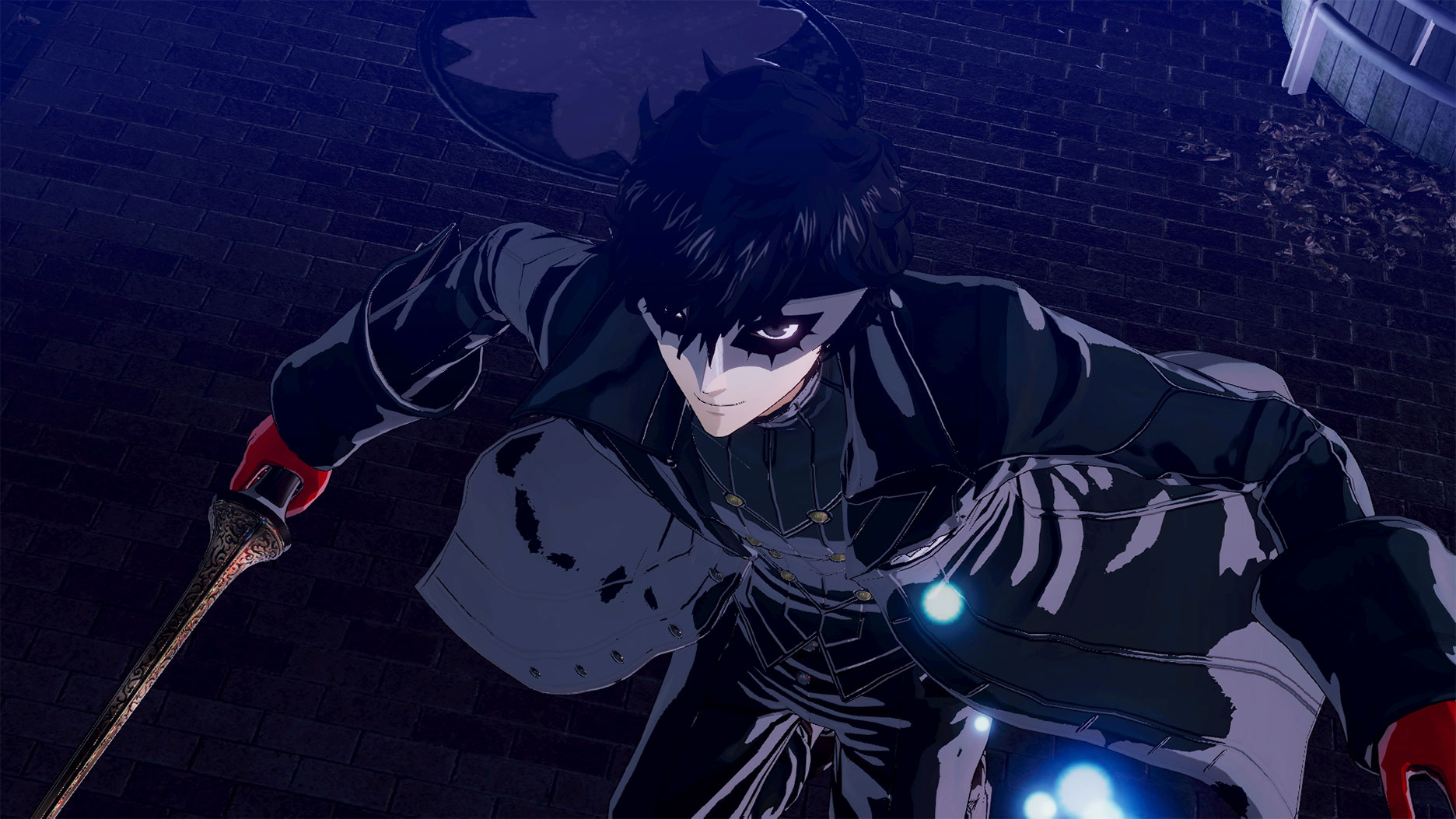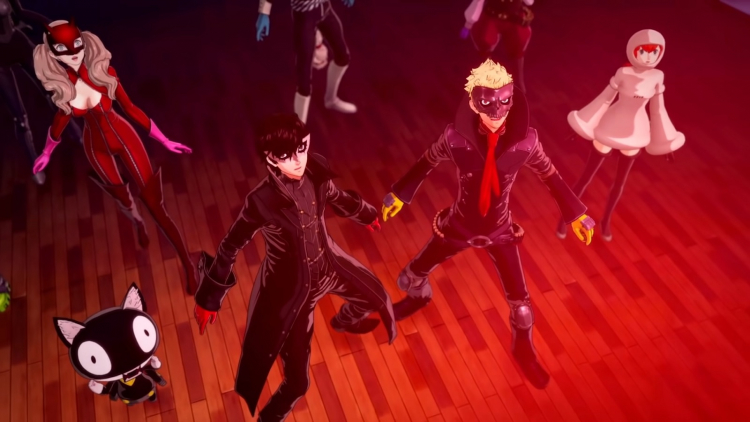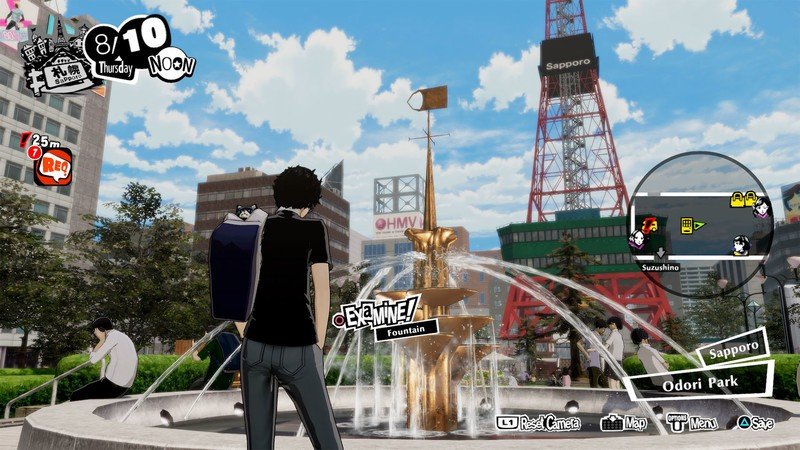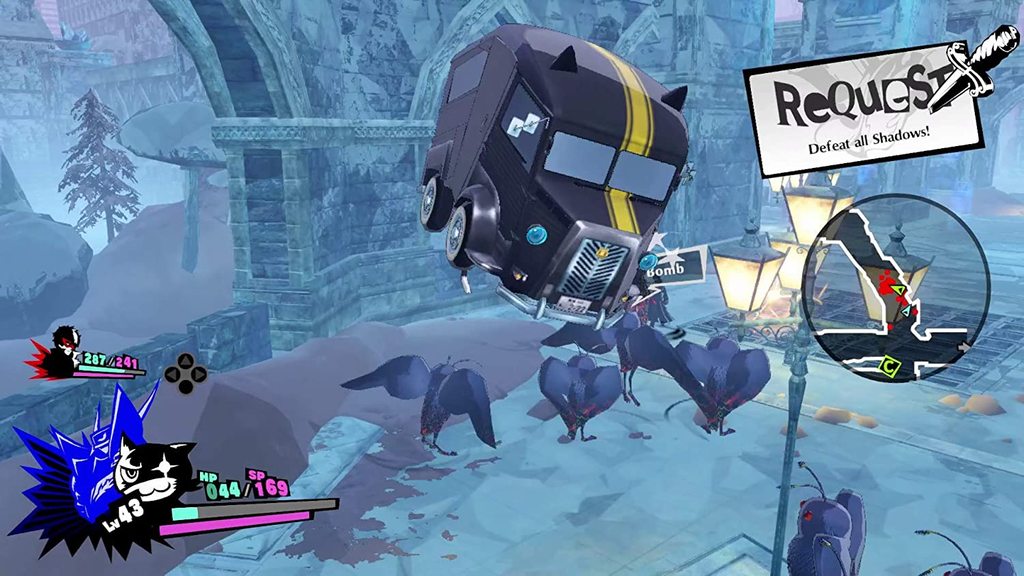Persona 5 Strikers review
It may not be a proper sequel to Persona 5, but I still had a blast with Joker, Ryuji, and the rest of the Phantom Thieves. Persona 5 Strikers is a streamlined follow-up of sorts, shedding the hours upon hours of back and forth and bonding in favour of a formulaic approach to combat and conversation that actually serves the series very well. Although, that’s more down to the exciting battle mechanics as you progress through the various Jails and the ever excellent writing that tends to feature heavily throughout the story.
Persona 5 Strikers follows the Phantom Thieves of Hearts as they try to live a normal life after the events of Persona 5. They return to Tokyo with the hopes of embarking on a road trip across Japan in the summer. As they are collecting supplies for the trip, they encounter someone who sends them on a journey to save Japan from a mysterious app known as EMMA. Somehow, this app is controlling people in the real world, and manipulating the various ‘bosses’ to become evil versions of themselves in the metaverse. There are some fantastic twists in the story and a handful of new characters who each have a big impact on the Phantom Thieves, such as police officer Zenkichi Hasegawa, an AI called Sophia, and university professor Kuon Ichinose.
Musou games seldom interest me anymore. There was a time when I enjoyed them, but over the years they all kind of blended into one. Fighting waves of enemies with a laborious hack-and-slash approach and a couple of special attacks got old fast, but there’s something magical about how Omega Force has not only reinvented the wheel, but incorporated the heart of the Persona series to make every battle well worth taking on. Of course, there is button-spamming, but there’s surprising depth in it. You can play as every member of the Phantom Thieves, and each one has benefits within their light and heavy attacks that can help you defeat the hordes of Shadows.

Each Phantom Thief can use these attacks to build up a combo which does varying degrees of damage. Panther has a whip that can be used at a distance whilst Skull gets in close. Personas often join in at the end of the combo to do specific damage depending on their style, so it pays to see how each fighter feels. Depending on the party members you choose (four useable Phantom Thieves in combat), there’s a lot of freedom to find the ones that suit your style. Whilst Oracle is the only one not useable in combat, she’ll help you to determine an enemy’s elemental weakness as well as unlocking doorways within the Jails. Sophia, the new character, is a great addition to the Phantom Thieves. As the story moves on, she becomes an integral member, and also a valuable asset.
Showtime moves dish out healthy amounts of damage, with each character having a different one. Not only do these look good, but they help when encountering large swathes of Shadows, often wiping out the majority of them in one go. All-Out Attacks are back, as is the ‘1 More’ mechanic, adding to the amount of damage the enemies sustain whilst in combat. You can keep switching between your party when fighting as well, letting you experiment with each member and taking advantage of their Personas. As Joker, you can store a certain amount of Personas which grows the more you play, so he’s often the best character to use because of the diverse range of abilities you have on offer. This is the only occasion when combat stops. Pressing the right shoulder button lets you pick a Persona’s attack before actually administering it to your unsuspecting victim.
The silky style for which Persona is known is ever present in Strikers, especially during combat. It was one of the reasons I always looked to get into a fight with the nearest shadow, or became excited when I knew I was closing in on the Monarch of the Jail (more on them shortly). Everything you do whilst fighting seamlessly transitions from one decision to the next, and the artistry in the cutscene animations makes you appreciate not only how the combat has drastically changed, but how gorgeous it looks. Not once did I find the battles repetitive, always moving from one to the next eager to try out my new Personas and skills thanks to the Master Arts each character has.

Master Arts are another cool feature of Persona 5 Strikers. The more you fight with different members of the Phantom Thieves, the more likely you’ll improve their abilities. For example, Fox can learn a counter effect that lasts for a set period of time, then later a counter effect that freezes enemies. Noir on the other hand can make Shadows dizzy, and will eventually be able to speed up her special attack. These Master Arts give you yet another reason to experiment, making sure Strikers doesn’t fall into the same trap that makes other musou’s become repetitive and dull.
The Jails are diverse in their layouts, especially when you get to the ice one, and travelling through them is always satisfying. You can jump onto environmental objects such as cars, lamp posts, and sculptures to avoid detection. Some can even be interacted with which allows you to do damage to Shadows. You can blow up cars, fire confetti canons, or make crystals explode, always providing hidden opportunities to do a bit of extra damage. Some parts of the Jails briefly become side-scrolling segments that offer a nice distraction, whilst at other times you can slide across wires or jump across rivers to get from one place to the next. Various checkpoints are around, giving you an opportunity to head back into the real world to stock up on essential supplies, visit the Velvet Room, or change your party members.
If you’ve played Persona 5 before, you’ll be somewhat familiar with a lot of what you can do in Strikers. Jails are essentially Palaces with some slight differences, but telling you now what they are would spoil the surprise. The Velvet Room is also pretty similar. You can fuse Personas, summon new ones, or register the ones you have. Collecting them within the Jails is done simply by walking over mask icons after a battle. As I said earlier, the combat is where it differs greatly, and I actually prefer how Strikers feels. Turn-based has always worked in the Persona series, but having the freedom to mix up your attacks in such a liberating way is much more my style.

Much of Persona 5 Strikers takes place within the Jails where you try to find core items relevant to the Monarch that resides there. There’s a particular formula to how you go about trying to hunt these bosses down, but the stories that surround each one are interesting and continue to highlight how much of a threat they are, but also how vulnerable they appear. In the real world, they may seem popular or well-respected, but under the surface they are troubled – often victims of bullying – and the balance in the writing is always well-managed. When you get to fight them, they provide some of the game’s more exhilarating moments. They can be incredibly difficult to defeat, but as long as you’ve been levelling up your Personas and lightly grinding throughout the jails, you’ll be just fine.
Eventually, you’ll unlock the ability to take on Requests. These are side missions that allow you to jump into previous jails and find Shadows who may still be in possession of someone’s heart in the real world. By defeating them, you’ll earn some money or items, such as skill cards or armour. You can even replay some Requests to gain better stuff the next time around. Requests aren’t just combat-based. You may need to head to the Velvet Room to deliver Personas to Lavenza, or deliver items to your friends. If you’re wanting to extend the overall hours you play Persona 5 Strikers, this is a great way to do so.
One of the best things about Strikers is exploring the various cities across Japan with your friends. You do spend a lot of time being the Phantom Thieves, but Strikers is as much about friendship and being a teenager in the real world as it is about saving humanity. Each character has a certain charm to them. Ryuji is a bit hot-headed and simple, but he has a big heart. Yusuke can be snobby at times, but he always has his friend’s interests in mind. Ann is a troubled young girl, but she is passionate about the safety of the gang, and even the smaller characters like Haru and Makoto are given enough time to play an important part of the story.

In the brief downtime you do have, you’ll eat a lot of food at the various restaurants around Japan. You’ll spend time cooking at your camper van, as well as visiting festivals, bathhouses, and more. Persona 5 Strikers is always about the bonds you make, and this is highlighted in another aspect to the gameplay. The more time you spend with each other, the more your Bond level increases. This will allow you to spend points on different skills that will help a lot as you progress. Some will grant you additional HP after a successful ambush, increase your overall SP, or offer discounts in Sophia’s shop (accessible from your hideout). There are loads to choose from, so it’s always worth checking the Bond menu out to see what will help you shape the way you play the game.
There’s so much involved in Persona 5 Strikers, and yet, it’s nowhere near the same length as Persona 5, which is kind of a good thing. It will still take a long time to finish, with it being around a quarter of the time of its predecessor. You are very much railroaded throughout, going from city to city, finding information about the monarch from tedious investigation segments in the real world and learning their password, then diving into the jail to try and confront them. Regardless, the overall story is excellent, and I had a lot of fun finding out the mysteries about who is behind the suspicious EMMA app and what their intentions are. It takes place six or so months after the events of Persona 5, but I wouldn’t say you’d be lost if you were coming in with no knowledge of what happened before. There are references to what happened, but these are fleeting. It’s clear that Omega Force are keen to introduce new players to the Persona franchise.
One of my biggest complaints is the way text and dialogue conversations pop up all the time, often interrupting gameplay for a quick conversation that tries to explain what’s happening, rather than just letting you explore. If you get a bit of momentum in a Jail, dialogue will unfold and another thirty seconds or so pass before you can continue moving. If you’re exploring the cities, you’ll have to listen or read walls of conversations, and it breaks up what you want to do a lot of the time. For the most part I was really into what they all had to say, but when you’re supposed to be controlling the characters and progressing the Jails, these pop-ups are highly frustrating.
Persona 5 Strikers is a superb follow-up to Persona 5, even if it isn’t quite the sequel people were hoping for. The same quality of writing is still present, and the combat is so compelling throughout that I never grew bored of fighting Shadows. The Bond system allows you to benefit from the deep friendship of the Phantom Thieves, and the Jails are thrilling to explore. I’d hoped that the cities you get to visit, be it Sendai, Sapporo, or Osaka, would be fleshed out better, but they’re still a nice change from being in Tokyo all the time. The music is great, and the visuals are solid, even if they do look exactly the same as Persona 5 did nearly five years ago. This isn’t some cheap cash-in for Persona fans; it’s a great game with a fresh approach to combat and a gripping story.




